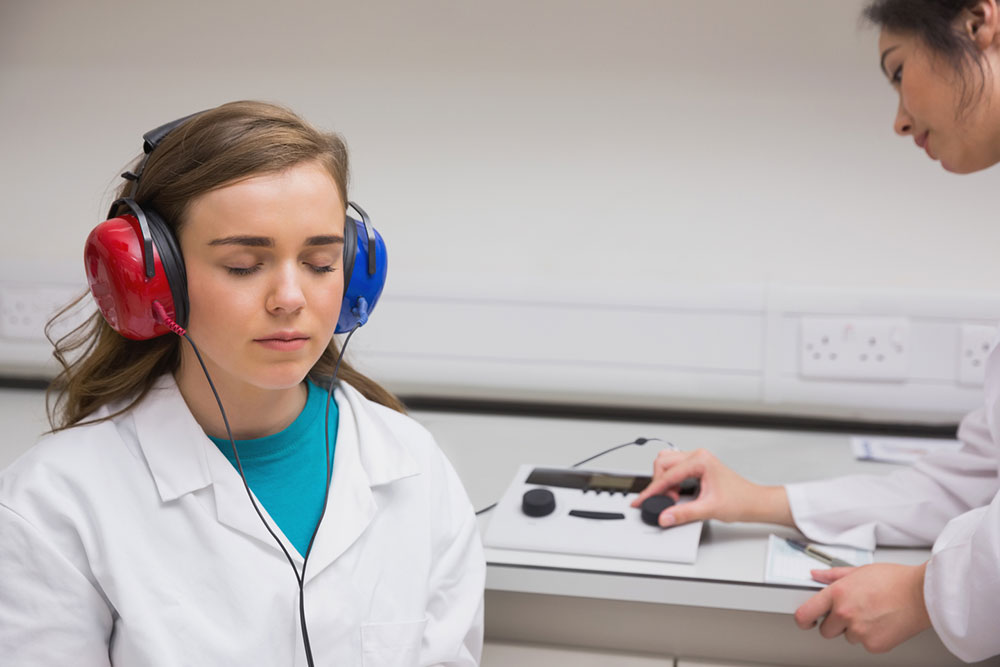A Quick Guide to Hearing Tests
Healthcare providers recommend hearing tests to determine whether a person has hearing loss or hearing issues and how severe the problem is. One does not have to do anything special to prepare for these tests. The process takes roughly 30 minutes, is conducted in a soundproof room, and causes no pain. But different types of hearing tests are available, each using different techniques to diagnose hearing loss.
What are hearing tests called?
Hearing tests are also known as hearing screenings or hearing evaluations. A hearing screening checks whether one’s hearing is normal. If someone fails this test, they must undergo a complete hearing evaluation or audiologic evaluation. Usually, audiologists perform hearing evaluations to determine the type of hearing loss a person might have and its severity.
Who should undergo a hearing test?
Many undergo hearing screening or hearing evaluation at least once in their lifetime. Hearing tests for children are done right after they are born. Sometimes, children undergo hearing screenings during their well-child appointment or routine checkups at school. Kids may experience hearing issues at any point in childhood and for several reasons.
Hearing tests are usually recommended for elders and adults who have trouble hearing. Sometimes, one may be unable to tell whether they have difficulty hearing unless pointed out by those around them. Adults who have the following risk factors must undergo hearing tests:
- Those exposed to loud noises at work
- Those who use power tools frequently
- Those living in areas with loud music, both live and recorded
- Those who have undergone a head injury
- Those who have had severe infections that may affect hearing
- Those who have a family history of hearing loss
How often should one undergo hearing tests?
The frequency usually varies from person to person. For instance, if one works in a noisy environment, such as a factory floor, they should check their hearing at least once a year. Otherwise, one can get their hearing tested in their 50s or 60s because most people usually start developing hearing loss with age. One can even undergo a hearing test earlier if they experience difficulty hearing. One can first try out a hearing test online. The online hearing test results will tell if the individual should see a healthcare provider. If required, the provider will further refer the patient to an audiologist for a formal hearing evaluation.
What are the different types of hearing tests?
There are several hearing tests. Some have been designed for adults, while others are used for children and babies. The common types of hearing tests include the following:
- Pure-tone testing
This is one of the most common forms of tests. It finds the quietest volume that a person can hear at each pitch. Both children and adults can undergo pure-tone testing. - Bone conduction testing
This hearing test is usually done to check if fluid or wax is blocking the middle or outer ear. Sometimes, it is also used to check whether there is hearing loss in the sensory cells of hearing. - Speech testing
Listening to certain words and repeating them verbatim can determine a person’s hearing capacity. This type of speech testing is also useful for determining how well a person understands speech. Both children and adults can undergo this hearing test. - Auditory brainstem response (ABR)
The ABR test is usually recommended for children and adults who cannot complete the pure-tone test. Sometimes, brain injury patients also need this test to check whether their hearing is affected. This test examines the pathways or connections between the brain and the inner ear. - Otoacoustic emissions test (OAE)
This test checks how the inner ear responds to sounds. Doctors may recommend it for children and babies who cannot undergo other tests because of their age. - Tympanometry
Audiologists use this test to monitor the movement of the eardrums. It is done in cases of ruptured eardrums, fluid presence in the middle ear, or wax buildup in the ear canal.
What happens after a hearing test?
One receives a report after a hearing test, based on which the healthcare provider develops a treatment and management plan. For example, if the test results show wax buildup or fluids blocking the middle ear, the audiologist may refer the individual to an ear, nose, and throat (ENT) specialist. This specialist may perform a procedure to remove the fluids or wax.
If a pure-tone hearing test indicates hearing loss, an audiologist may do the following based on the test results:
- Check whether the person has mild, moderate, or severe hearing loss
- List the different types of hearing aids and help the patient choose one that will help them hear better
- Provide information regarding what to expect while using specific hearing aids
- Help with the selection and fitting of the hearing aid so that patients are comfortable



